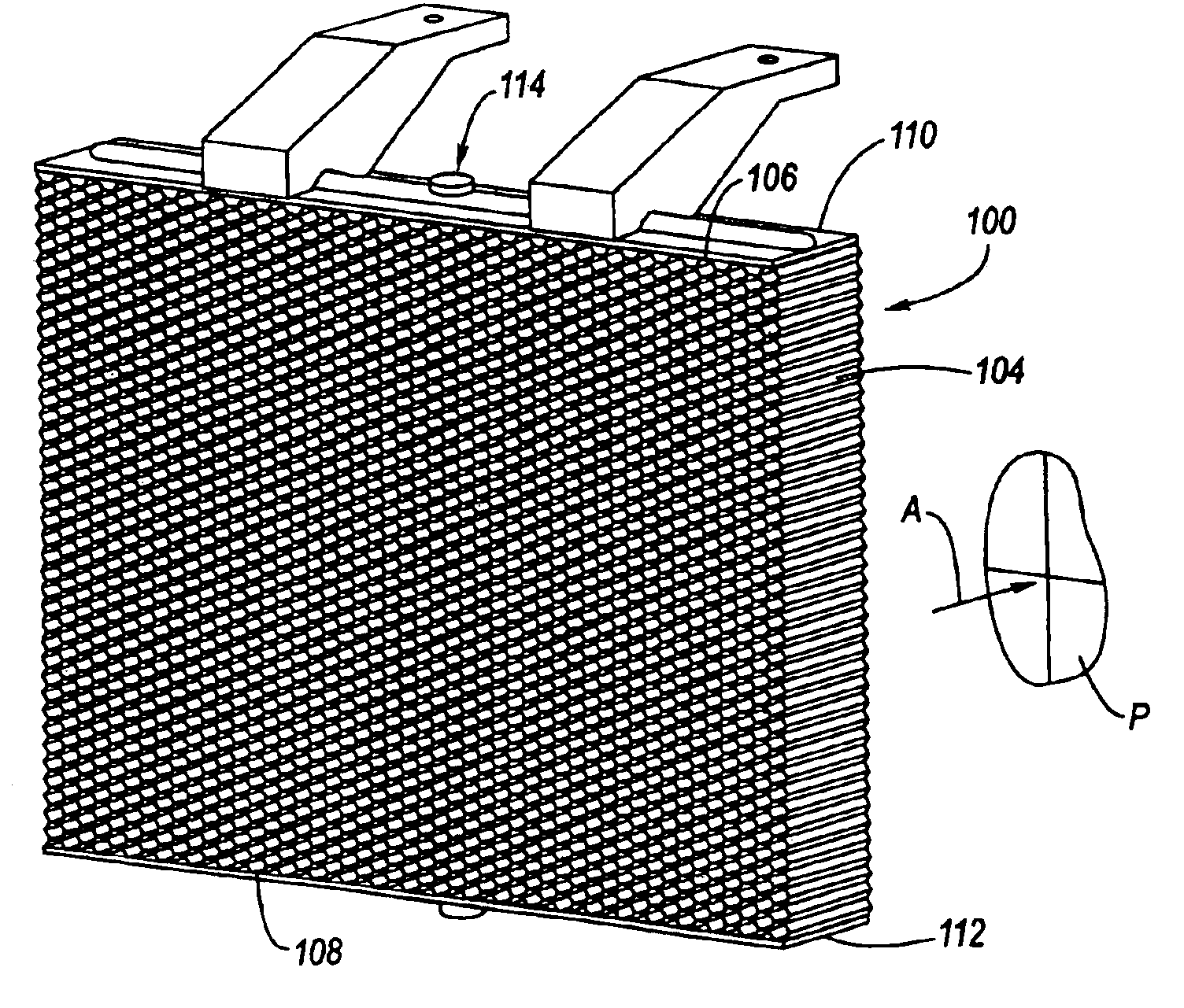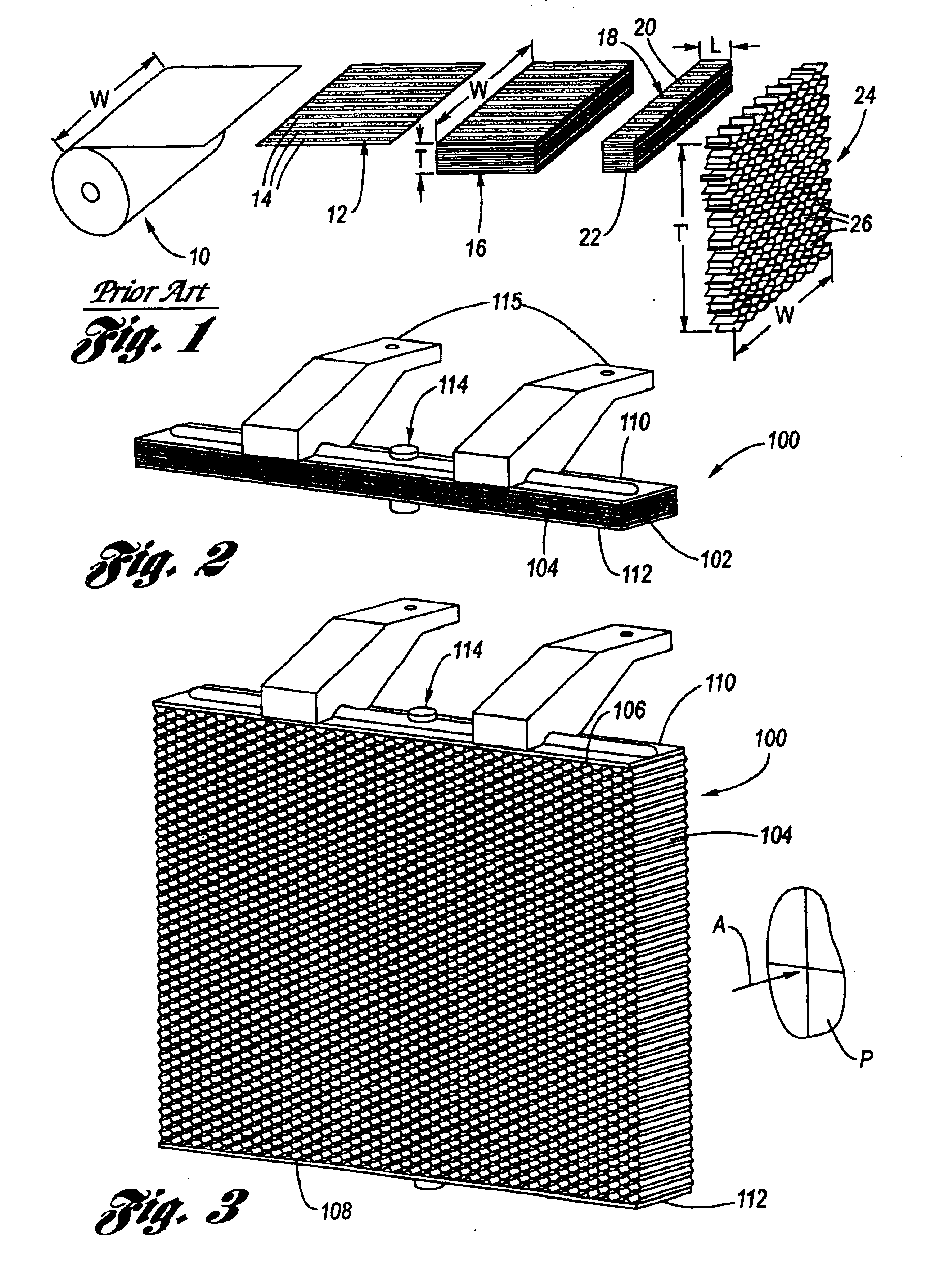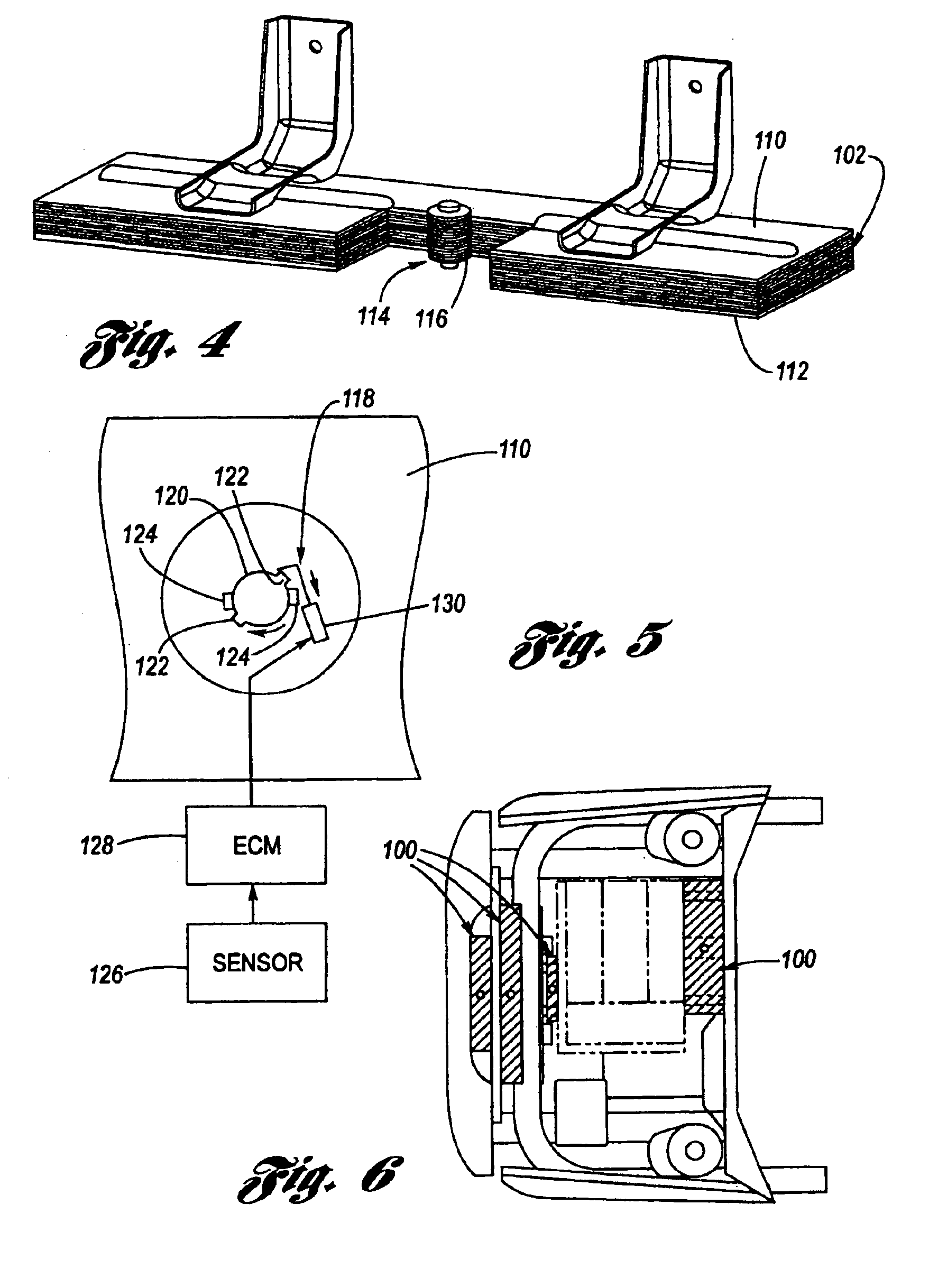Volume filling mechanical structures for modifying crash deceleration pulse
a mechanical structure and deceleration pulse technology, applied in the direction of shock absorbers, elastic dampers, roofs, etc., can solve the problems of unstable contraction space, low force level, and inability to use other uses of occupied contraction spa
- Summary
- Abstract
- Description
- Claims
- Application Information
AI Technical Summary
Benefits of technology
Problems solved by technology
Method used
Image
Examples
Embodiment Construction
Referring now to the Drawing, FIGS. 2 through 9 depict a most preferred embodiment of an active dedicated crash energy management structure 100 according to the present invention.
A honeycomb brick 102 composed of a honeycomb celled material 104 is provided, as for example according to a method of manufacture utilized to provide HOBE® bricks, as discussed hereinabove. The honeycomb brick 102 is not expanded such that it is at its most compacted state. Attached (such as for example by an adhesive) to the upper and lower faces 106, 108 of the honeycomb brick 102 are respective end caps 110, 112. The end caps 110, 112 are rigid and serve as guide members for defining the configuration of the honeycombed cell material 104 between a dormant state as shown at FIG. 2 and a deployed state as shown at FIG. 3.
The end caps 110, 112 need not necessarily be planar. Indeed, they do not need to have the same shape or size, but for a minimum unexpanded volume the end caps should have the same size a...
PUM
 Login to View More
Login to View More Abstract
Description
Claims
Application Information
 Login to View More
Login to View More - R&D
- Intellectual Property
- Life Sciences
- Materials
- Tech Scout
- Unparalleled Data Quality
- Higher Quality Content
- 60% Fewer Hallucinations
Browse by: Latest US Patents, China's latest patents, Technical Efficacy Thesaurus, Application Domain, Technology Topic, Popular Technical Reports.
© 2025 PatSnap. All rights reserved.Legal|Privacy policy|Modern Slavery Act Transparency Statement|Sitemap|About US| Contact US: help@patsnap.com



